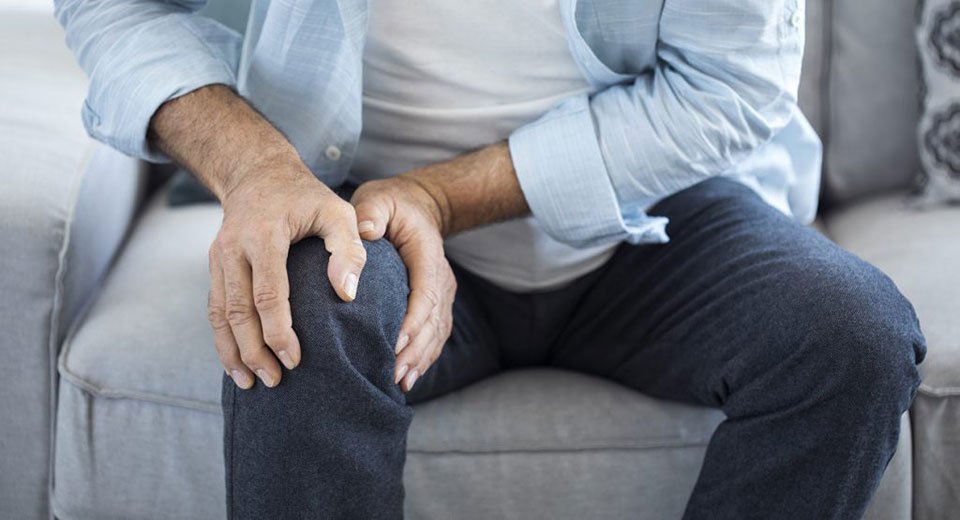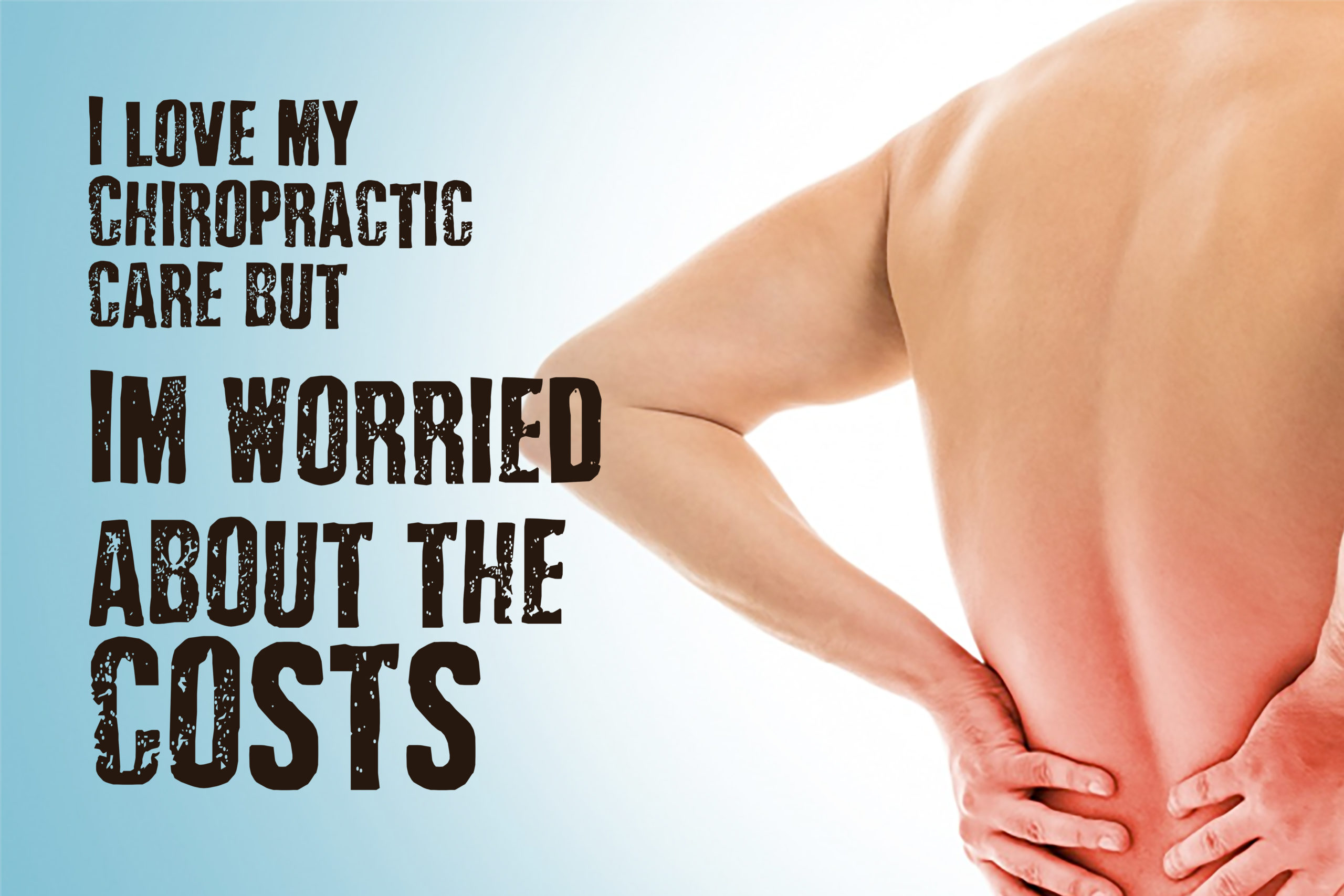 20 Oct 2021
20 Oct 2021
Beat the Cold-weather blues. Tips for dealing with winter stiffness
Many who suffer from chronic joint stiffness and pain find that cold winter weather worsens their symptoms. Though the scientific evidence behind this relationship is inconclusive, taking a few extra measures to ease joint pain may help you brave the snow, rain, and low temperatures that are a staple of Buffalo winters.
These tips are meant to be as inclusive as possible and should help mitigate arthritis flare-ups, as well as fight stiff and painful joints for the majority of people out there. However, each person’s experience with arthritis is different, and it is important to find out what works best for you.
It is also important to note that while these tips will help you fight joint stiffness and pain during the cold months, they are by no means a cure. If you have arthritis, it is important to visit an orthopaedic specialist to receive a proper diagnosis and potential treatment options.
Staying Warm
Though not all arthritis patients agree on this, many patients find that warm weather makes their condition more manageable. Unfortunately, we are not all blessed with the opportunity to live in a warm climate.
Everyone puts on extra layers in wintertime but if you suffer from arthritis staying warm becomes even more important. Here are a few ways to keep the effects of cold weather at bay.
1. Wear Light but Warm Layers
Wearing several layers of clothing is the best way to trap warm air close to your body. However, wearing bulky and heavy clothing won’t do you any favours if you already feel stiff.
Be smart in your choice of clothing materials – stick to breathable cotton as your first layer and then add on lightweight wool or fleece. Make sure that your outerwear is suitable for the weather and does not let in any moisture.
Your core, from your hips up to your shoulders, is the most important part of your body to keep warm. This promotes a better blood flow which in turn also keeps your entire body warmer.
2. Wear Compression Socks and Gloves
Your extremities are the first parts of your body to cool down. These areas also have poorer blood circulation, especially in women.
Compression socks and gloves help with both your blood circulation and trapping heat so they are a worthy purchase. You might also want to add compression tights or thermal tights to your wardrobe.
3. Take a Hot Bath or Shower
A hot bath is not only relaxing but can also serve as great pain relief. A hot bath improves your blood flow and relaxes muscles, which can reduce your arthritis-related pain.
Make sure that you don’t cool off too quickly after steaming in the bathroom. Step into warm and comfortable clothing directly afterwards.
4. Sleep with Extra Warmth
Although it is often said that sleeping at cooler temperatures gives you a better night’s sleep, this won’t be the case if you are already experiencing joint pain from the cold. During the winter, staying warm during the night can help keep joint stiffness and pain at bay when you wake up.
Staying Active
Although it is often easier said than done, staying active is an integral part in preventing joint stiffness. If the outdoors does not seem inviting during cold weather, staying active indoors is a great alternative.
1. Daytime Outdoor Activities
Vitamin D has been shown to help improve bone health, as well as give your immune system a much-needed boost. Since the sun is the best source of vitamin D, getting your necessary dose becomes more difficult during the winter.
Going for a walk or partaking in other light outdoor activities can help you soak up the few rays that do peek through during winter (remember to bundle up!). Walking your dog, finding an exercise buddy, and opting to walk instead of taking the car on short trips are all great ways to get outdoors.
2. Take Classes
If you are not the type to get excited about going to the gym, signing yourself up for exercise classes gives you an extra push to stay consistent. Find a sport that suits your condition though, do not join a class that would only make you feel worse.
Indoor classes are a good alternative to outdoor activities. They are rarely affected by the weather and being indoors also keeps you warm.
3. Get a Massage
Though this is not technically staying active, it can help with pain management, especially when done regularly. A good massage therapist will know how to relieve your joints and relax your muscles, it also helps with blood flow.
Adjust Your Diet and Supplements
If you know that colder weather affects you negatively, start paying closer attention to your diet and supplements before the temperature drops. Preparing your body from the inside out can help minimize the impact of cold weather.
1. Consume Vitamin D
As mentioned, vitamin D is very important for those suffering from arthritis. Since there are fewer sun hours during winter, you may consider taking vitamin D supplements (but always after consulting with your primary care doctor).
There are also foods rich in vitamin D that you can make part of your staple winter diet. Examples are fatty fish like salmon and sardines, mushrooms, milk, shrimp, egg yolks and cod liver oil.
2. Consult Your Chiropractor
Although many try to treat their arthritis through lifestyle changes instead of medication, sometimes you need more targeted treatment. Advanced stages of arthritis can be extremely impactful on your everyday life, and no amount of keeping warm will relieve your pain and stiffness. In these cases, chiropractic specialists like Dr Michelle Dodge, Dr Kristen Bezek, or Dr Ashley Lapinski at MG Dodge Chiropractic can help diagnose and treat your symptoms, and get you back to the pain-free life you deserve.
If you are tired of suffering from joint stiffness and pain, give us a call or schedule an appointment with one of our office today.
Uncategorized
COMMENTS: No Comments
 18 Sep 2021
18 Sep 2021
7 Epsom Salt Facts to Learn
Things you may not already know about Epsolm Salt
#1- It’s nothing like table salt. Epsom salt was named for a bitter saline spring at Epsom in Surrey, England. It is one of many naturally occurring mineral salts, a compound of magnesium and sulfate.
#2- Epsom salt is good for the mind. Epsom salt helps stabilize mood and relieve stress, anxiety and depression. In fact, some researchers claim that taking magnesium increases serotonin (happiness or relaxation hormone) production in the brain.
#3- Epsom salt is good for the body. Epsom salt helps relax muscles and relieve pain in the shoulders, neck, back and skull. For example, by relaxing the muscles surrounding the skull, the magnesium in Epsom salt may help release a headache or migraine.
Some researchers also think that magnesium is good for reducing inflammation in internal organs. This may help reduce the risk of cardiovascular disease and improve digestion/bowel movement. Integrative medical experts commonly recommend Epsom salt to patients with chronic fatigue syndrome and cold intolerance.
What about Epsom salt’s ability to correct a magnesium deficiency? While doctors expect better magnesium absorption through the skin, there’s no published research that compares oral magnesium supplementation with magnesium absorption through the skin.
#4- It only takes 15 minutes to benefit. Put 300 grams of Epsom salt into a bathtub filled with hot water. In just 15 minutes, you will start to experience the mental and physical benefits of Epsom salt.
#5- Epsom salt is for external use only. Some may claim that drinking Epsom salt is good for detoxification. The truth is that drinking Epsom salt causes some people to experience serious side effects such as severe diarrhea. Sudden and dramatic changes in bowel behavior can be very dangerous and cause dehydration and discomfort. There are no studies to prove that taking Epsom salt orally is safe or beneficial.
#6- It’s bad for people with severe skin inflammation or infection. No one with an open wound or a severe burn should use Epsom salt. If you have an open wound, consult your dermatologist before use.
#7- Buy Epsom salt from a reputable source. Healthy supermarkets (e.g., Whole Foods Market or Fresh Thyme Farmer’s Market) typically offer the best quality Epsom salt. Be sure to buy 100 percent magnesium sulfate. Beware of online retailers who may offer exceptional deals but cannot guarantee quality or purity.
Uncategorized
COMMENTS: No Comments
 24 Aug 2021
24 Aug 2021
Working out for better brains!
| More Exercises Are Proving Helpful for Optimal Brain Health & Function | |
| How can you boost brainpower? It’s an important question to ask, especially with the rise of dementia and Alzheimer’s diseases. Is there really anything that can be done to achieve optimal brain health in an effort to ward off these debilitating diseases? Indeed there is! Reuters recently reported on a study that found more and more physical exercises are proving useful for brain health. Tai Chi seems to dominate the cognitive function category. But they’re definitely not alone – which is great news for people who like activities that are more energetic. A variety of strength training and aerobic exercises have been shown to slow cognitive decline in adults over the age of 50. Neurons in the brain fire whenever people are engaged in a form of physical activity. Even something like walking regularly can have a profound effect on brain function. The neurons in the brain fire whenever people have to balance and contract their muscles. Not only does the rapid firing help the body to perform these functions even better, they keep the brain active and healthy. The Harvard Health Blog recommends walking at the very least. If people aren’t into that, they can try: Swimming Dancing Tennis Aerobics Classes and even hiring a personal trainer. The goal here is not so much what type of physical activity a person engages in, but the regularity in which they do it. Exercising at least three days a week is a good start for achieving optimal brain health. Another good thing is a regular visit to your local chiropractor to keep joints and tissues healthy and strong. Visit your friends at MG Dodge chiropractic today and align yourself with good health, for your body and your brain! |
Uncategorized
COMMENTS: No Comments
 17 Aug 2021
17 Aug 2021
Chiropractic Care for Long Road Trips
It’s that time of year to start planning long trips to visit family, take kids to college, or return from your awesome vacation. For some families, that means long road trips, and the older you get, the more likely the aches and pains from the long drive linger for days. But are there steps you can take to alleviate your neck and back pain when driving for multiple hours at a time?
At MG Dodge Chiropractic we know that long road trips can be daunting, so we want to make sure you’re prepared the best you can in order to not be cutting that turkey while suffering from back spasms.
Chiropractic Care for Long Road Trips
Stretch Beforehand
Sitting in one position for an extended period of time tightens muscles. We recommend stretching before getting in the car to loosen them and prepare them for the trip. Stretching opens up the passageways for blood and oxygen to get to muscles in the legs, which can greatly reduce the chance of deep vein thrombosis, a condition that can become very serious, especially in the elderly. DVT is a blood clot that can form in a vein deep in the body, normally in the lower legs and thighs through stationary seating. It can cause a serious problem in the lungs, called a pulmonary embolism. Stretching beforehand in addition to taking regular breaks can counter this condition.
Keep Your Muscles Warm
If you don’t have built in car seat warmers in your vehicle we advise purchasing some heat packs. Applying heat packs to the lower back and glutes will dilate the blood vessels, improve blood circulation, and help sore and tightened muscles relax. These heat packs can greatly relieve pain or spasms that can affect drivers and passengers that are seated in the same position for a prolonged amount of time.
Make Sure Your Car Seat Has Good Lumbar Support
Your spine has a natural inward curve but through fatigue and lack of concentration we have the tendency to slouch forward, causing a body position that puts extreme pressure on the lower back. If your car seat is not suitable for correct posture, apply a small rolled up towel or cushion to your lower back to maintain its natural position.
Support Your Feet
Bottom-up leverage is important for supporting your spine. Your feet need to be firmly placed on a surface and at the right height to avoid your lower back compensating for the pressure and putting your health and wellness at risk. The optimum position to have is your knees at 90 degrees and your hips just below knee height. If you have the option while driving to utilize cruise control, having both feet flat on a firm surface is best.
Rest And Take A Break
It is recommended that for every 2 hours of driving you should take at least a 15-minute break. This break should include getting out and walking around. Your body was built to be mobile and flexible, sitting in the same position for hours on end is not ideal for it. It is best to plan your trip beforehand and mark the stops that you will be able to take. Malls or outlet stores are ideal because they have the capacity for short walks around. Walking will also increase the flow of blood through your body, carrying oxygen to those fatigued muscles around the back and legs that need healing. Contrary to belief, taking a 15-minute walk will actually rejuvenate you and make you less tired.
Eat Healthy for Long Trips
Fast food and road trips seem to go together, but we highly advise against this. Fast food is generally packed with sugars which results in a high energy spike upon consumption, followed quickly by a ‘crash’ period. This can result in you becoming fatigued and slouched over, putting extra pressure on your neck and back. Making wise food choices is essential for optimum wellness. Healthy snacks like nuts, fruit, and vegetables will give you the necessary energy you need, while not having you come down off of high sugar surges.
Stay Hydrated
Like eating healthy, staying hydrated has the benefits of aiding in your body’s fight against pain and stiffness. Drinking water helps prevent muscle cramping and lubricates the joints in the body. It also helps to carry oxygen to the cells in your muscles, further aiding in their constant recovery.
Chiropractic Care After A Long Road Trip
After a long road trip, there are benefits to visiting your local New York Chiropractor. Even after implementing all of the tips above your body can still suffer from the aches and pains of a long car journey. Our chiropractors can perform a number of pain-free procedures (such as spinal adjustments), that can help in the recovery process.
Set up an appointment with us today by calling 315-376-8088
Uncategorized
COMMENTS: No Comments
Welcome Dr. Ashley Lapinski- the newest Associate to our Lowville Office!

This month we’re very excited to welcome the newest addition to the MG Dodge Chiropractic family, in our Lowville, NY Office.
Dr. Ashley Lapinski is a 2017 graduate of New York Chiropractic College and is board certified by the National Board of Chiropractic Examiners. She also has additional certification in RockTape and NIMMO technique. She is a member of the American Chiropractic Association (ACA) and New York State Chiropractic Association (NYSCA).
Dr. Lapinski utilizes chiropractic care to improve function of the spine and nervous system, joints, and muscles to get patients moving and feeling better. She also uses patient education to encourage patients to take a more active role in their health and wellness. Dr. Lapinski takes a ‘whole person’ approach in chiropractic care, which means looking for the underlying causes of disease, discomfort, and pain, as opposed to just treating the symptoms. Many seemingly unrelated symptoms often arise from imbalances in the spinal column, and Dr. Lapinski will be able to determine the root cause of the pain and create a personalized treatment plan specific to each patient’s individual needs.
When she is not treating patients Dr. Lapinski can be found spending time out in nature or hanging out with her two cats. She is a New York native originally hailing from the Binghamton area and is excited to explore all that Lowville and the North Country have to offer.
Uncategorized
COMMENTS: No Comments
 03 May 2021
03 May 2021
Chiropractic care for neck pain
Neck pain is a common problem in America, affecting millions. While many people reach for over-the-counter medications to treat their neck pain, others are turning to a more natural—and more effective—alternative: chiropractic care.
What Causes Neck Pain?
Neck pain can be acute (short-term) or chronic (long-term), and many things can cause it. The most common causes of neck pain include:
- Abnormalities in the bone or joints
- Trauma
- Poor posture
- Degenerative diseases
- Tumors
- Muscle strain
- Whiplash
How Does a Chiropractor Diagnose Neck Pain?
Your chiropractor will evaluate your spine as a whole because other regions of the neck (cervical), mid back (thoracic), and low back (lumbar) may be affected as well. Along with treating the spine as a whole, chiropractors treat the “whole person,” not just your specific symptoms. He or she may educate you on nutrition, stress management, and lifestyle goals in addition to treating your neck pain.
Before deciding which approach to try for your pain, the chiropractor will do a thorough examination to diagnose the specific cause of your neck pain. He or she will determine any areas of restricted movement and will look at how you walk as well as your overall posture and spinal alignment. Doing these things can help your chiropractor understand your body mechanics.
In addition to the physical exam, you’ll also go through your past medical history with the chiropractor, and he or she may order imaging tests (such as an X-ray or MRI) to help him or her diagnose the exact cause of your neck pain.
Chiropractic Treatments for Neck Pain
For most people, pain goes away without treatment after a few days or weeks. But for the less fortunate, neck pain becomes chronic and debilitating and lasts for months or even years. It is a challenging condition to diagnose, treat, and study. Depending on the cause and severity of your neck pain, your chiropractor may use a combination of spinal manipulation, manual therapy, and other techniques as part of your treatment plan for neck pain.
Through highly skilled, gentle spinal manipulation or adjustment of vertebrae, your chiropractor can help you get back to living a healthy life away from the painkillers. To learn more about this drug-free pain relief option, contact our office today.
Uncategorized
COMMENTS: No Comments
 17 Feb 2021
17 Feb 2021
New Legislation makes Chiropractic Care More Affordable
| On January 13, 2021, Congress passed the Competitive Health Insurance Reform Act, something that levels the financial playing field in the insurance industry, including the affordability of chiropractic care. “The American Chiropractic Association advocated for this important change for many years. The passage of this bill is an essential step toward increasing competition in health insurance markets and lowering prices for consumers,” said ACA President Robert C. Jones, DC. Previously, insurance companies were considered exempt from federal antitrust laws. Said laws served the purpose of eliminating monopolies and fostering a competitive market. Insurance companies have been able to establish monopolized territories and cherrypick what healthcare services they decide to cover, including chiropractic. The American Chiropractic Association explains in their article that, “It levels the playing field between a doctor and a health insurance company. Doctors have long been subject to federal antitrust scrutiny… Health insurance companies […] have been free to exchange among themselves suggested price information, terms of service and criteria for the reimbursement of doctors of chiropractic. “They also have been free to obtain and utilize reimbursement criteria from various ‘medical consultants’ who often are direct competitors of doctors of chiropractic and have anticompetitive intent. With certain limited exceptions, this ability of insurance companies now ends with the elimination of the ‘business of insurance’ exemption to the federal antitrust laws.” The Act has finally been signed into law after years and years of being struck down by previous legislations. There are mixed reactions to the new law. The bottom line is that it means change in the insurance industry, and potentially change in the cost of specialized healthcare. Author: ChiroPlanet.com Source: American Chiropractic Association. January 20, 2021. | |
Uncategorized
COMMENTS: No Comments
